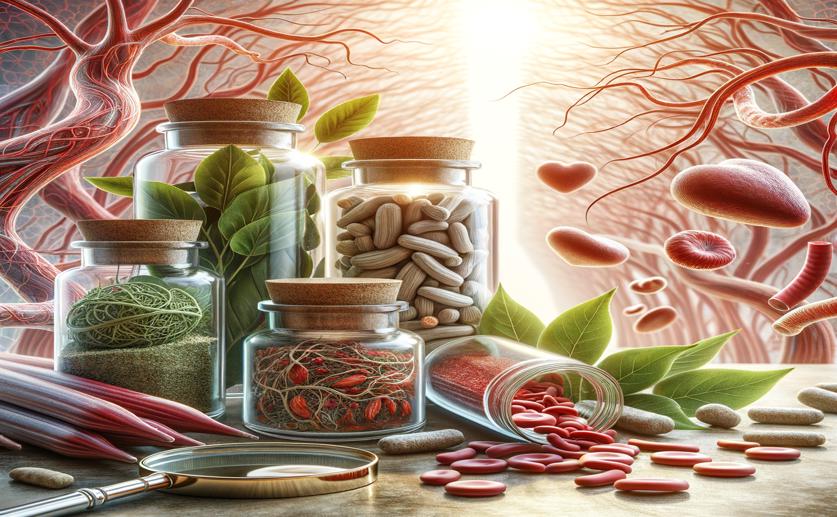
How Plant Extracts Affect Blood Circulation in Different Health Conditions
Jenn Hoskins
23rd May, 2024

Image Source: Natural Science News, 2024
Key Findings
- The study by Nanjing University of Chinese Medicine examined how Salvia miltiorrhiza's stem and leaf extracts are absorbed and metabolized in rats
- Microcirculation disturbances in rats altered the absorption of key compounds, increasing rosmarinic and lithospermic acids but decreasing caffeic acid
- The findings suggest that the physiological state of the organism can significantly impact the effectiveness of herbal medicines like Salvia miltiorrhiza
References
Main Study
1) Comparative pharmacokinetic study on phenolic acids and flavonoids in normal and microcirculation dysfunction rats plasma by UPLC-TQ/MS/MS after oral administration of Salvia miltiorrhiza stem-leaf extracts.
Published 30th May, 2024 (future Journal edition)
https://doi.org/10.1016/j.heliyon.2024.e30910
Related Studies
2) Salvianolic acid A suppresses MMP-2 expression and restrains cancer cell invasion through ERK signaling in human nasopharyngeal carcinoma.
3) Salvianolic acid A blocks vasculogenic mimicry formation in human non-small cell lung cancer via PI3K/Akt/mTOR signalling.
4) Protective Effects of Rosmarinic Acid against Selenite-Induced Cataract and Oxidative Damage in Rats.
5) Rosmarinic acid attenuates inflammation in experimentally induced arthritis in Wistar rats, using Freund's complete adjuvant.



 22nd May, 2024 | Jim Crocker
22nd May, 2024 | Jim Crocker